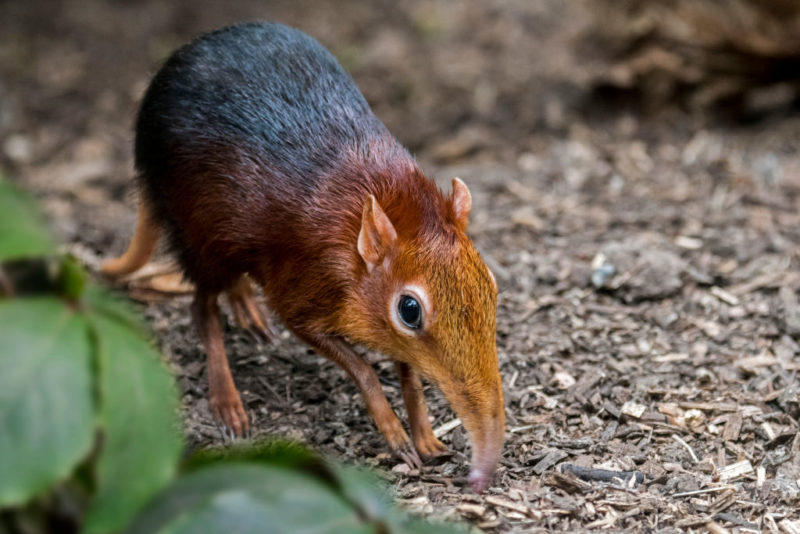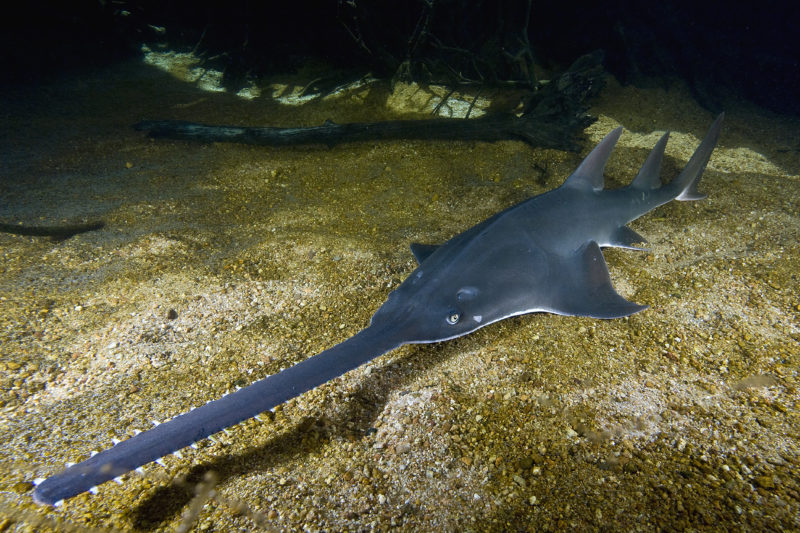10 Of The Rarest Animals In The Entire World


Philippe Clement/Arterra/Universal Images Group via Getty Images
Given how big the world is, it would be naïve to believe we’ve discovered all that there is to be found. From undiscovered plant life and sea creatures to never-before-seen insects, there’s so much out there that’s yet to be documented!
Even those that have been discovered haven’t been completely researched, given how rare they are; we’re probably lucky to have come across them at all. From the tallest mountains to the deepest oceans, we bet you’d never find all 10 of these rare animals! Keep reading through to see more!
Largetooth Sawfish


The rare largetooth sawfish looks like something directly out of Jurassic Park. Growing as long as 20 feet, its flat snout is lined with large teeth. The sawfish uses its impressive nose to slash through schools of fish, stunning prey. Its sleek body makes it look like a distant relative of a shark, but it’s actually a part of the ray family!
As one of five sawfish species, the largetooth can be found in Australia, the Amazon and the Indo-Pacific. Historically, they’ve also resided in freshwater lakes and rivers in the United States, but haven’t been seen for over 60 years. Habitat loss and exploitative fishing practices have placed the largetooth sawfish on the endangered species list.
Blue White-Lipped Island Pit Viper
While the vibrant green white-lipped pit viper is commonly found across Indonesia, very rarely can a stunning blue version be found. The rare blue white-lipped island pit viper can only be found on Komodo Island – a genetic one-off that’s baffled scientists since its discovery.
Unlike other reptiles, which can temporarily change color, the blue white-lipped pit viper remains the same shade of aquamarine all its life. This viper species is venomous and is behind many of the snake bites that happen across Indonesia. This is due to their curious hunting habits, which lead them out of the bamboo forests and into busy urban areas.
Blue Carpenter Bee
We typically think of bees as yellow and black, but, in reality, they come in a variety of colors! White, green, purple and all-black bees have been found among the world’s 25,000 bee species – but nothing compares to the stunning beauty of the blue carpenter bee.
These large, solitary bees are found throughout southeast Asia, southern China and India. Only females sport the brilliant blue hue, and are also the only ones with a stinger.
Unlike most honey bees, carpenter bees are solitary, living inside small burrows they carve within trees. They also make honey, but it’s different than the type you’d find on grocery store shelves. Female carpenter bees use the honey to make “bee bread” by mixing it with pollen and laying their eggs on top, forming a protective layer around the larvae.
Elephant Shrew
The tiny, fuzzy, and totally adorable elephant shrew isn’t even related to most other shrew species! This small mammal is actually more closely related to elephants and aardvarks. Native to southern Africa, elephant shrews live in forested areas, meaning they are continually threatened by habitat loss. This has led them to become endangered.
The elephant shrew protects itself from predators by using a powerful scent gland to mark its territory. Even though they’re small, they’re known to be incredibly vicious toward intruders. Between their size, population and attitude, elephant shrews are rarely seen in the wild.
Vaquita
The vaquita, a type of porpoise that resides in Mexico‘s Gulf of California, is the rarest marine mammal in the world. First discovered in 1958, 90 percent of the world’s vaquita population was eradicated by 2017. Now, scientists believe there are only 10 of them left.
Illegal fishing has led many vaquita to be caught and drowned in underwater gillnets deployed by poachers looking to catch a different endangered species, the totoaba. This large fish is prized for its swim bladder, which is used to make soup with supposed medicinal properties.
Kākāpō
The adorable kākāpō can only be found in New Zealand. Its Latin name, Strigops habroptilus, describes it perfectly, translating to “owl-face soft-feather.” It’s also the world’s only flightless parrot species, and was kept as a pet by the Māori people and European settlers. Sadly, the deforestation that colonialism brought to New Zealand greatly impacted kākāpō populations.
The kākāpō is still critically endangered, but special precautions have been undertaken to ensure it has a chance at survival.
Decades ago, New Zealand’s government developed a recovery plan, which involved collecting the birds and relocating them to predator-free islands – Whenau Hou/Codfish Island, Little Barrier Island, and the Anchor and Chalky Islands – complete with feeding stations and helping human hands to assist in raising new chicks!
Giant Squid
Countless marine giants lurk in the dark depths of the world’s oceans, but the giant squid is surely one of the most terrifying – the largest one ever recorded by scientists was nearly 43 feet long!
Since they live deep underwater, seeing a giant squid in the flesh – especially a live one – is incredibly rare. In fact, all scientists know about the species comes from dead squids that wash up on shore or in fishing nets. It wasn’t until 2012 that a Japanese research team was able to film and observe a live one in its natural habitat.
Pangolin
Looking like a cross between a scaly reptile and an armadillo, it’s as if the pangolin is something a child made up, rather than an actual species. These solitary animals prefer to eat ants and small insects, and will curl into a ball when threatened.
Sadly, people either make these nocturnal mammals pets, eat them or believe their scales have medicinal properties, meaning they’re vulnerable to becoming critically endangered. Pangolins are the most trafficked mammal in the world. Outside of their meat and scales being highly sought after throughout Asia, products made from them – boots, bags and belts – are coveted in the US.
Thanks to growing conservation efforts, pangolin trafficking is starting to become more heavily criminalized. In 2020, China increased protection for the native Chinese Pangolin species and banned the use of the animal’s scales in traditional medicine – a huge win for conservation, since around 200,000 pangolins are trafficked each year.
Snow Leopard
The noble snow leopard is found in the mountains of 12 countries across Asia, including India, China, Mongolia and Nepal. Its habitat covers a range of 772,204 square miles, and since it’s so vast, 70 percent remains unexplored. In some locations, the snow leopard’s population density is as little as 0.1 to 10 cats per 38.6 square miles, making tracking one down incredibly difficult.
More from us: Careful! These Cute Animals Will Actually Kill You
Even with all that land, snow leopards are still considered a vulnerable species, due to habitat loss and climate change. Luckily, you can see many happy and thriving ones in wildlife centers and zoos across the world!
Recent Posts
Ten Of The Most Stunning Waterfalls On Earth
Few sites in nature inspire more awe and wonder than waterfalls. As a result, these…
Nine Terrifying Birds That Look Just Like The Dinosaurs They’re Descended From
For a large number of animals, it's clear they descended from dinosaurs - think of…
There’s a Tree in California That’s So Special, You Could Go to Jail For Visiting It
Located deep in the heart of Redwood National and State Parks (RNSP) is the world's…
10 Unique Dive Spots From All Over The World
Considering that the Earth is covered by more than 70% water there are plenty of…
Steer Clear Of The 8 Most Dangerous Airports in the World
Most major airports are tucked away far from the main thoroughfares of cities, meaning tourists…
These Underwater Photos Will Make You Want To Never Swim In the Ocean Again
Imagine swimming through the ocean, having a relaxing float in a creek or adventuring in…